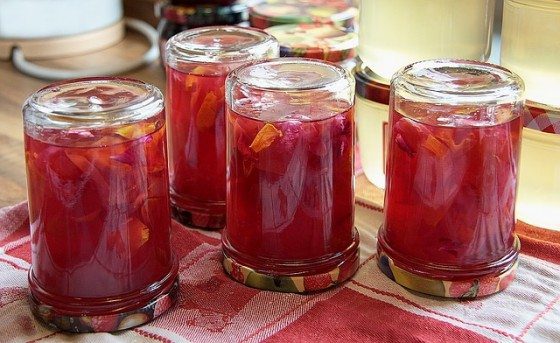Muscle and joint pain is a pain. Back, leg, and joint pain are some of the most common complaints by people as they age. But everyone is susceptible to the miserly discomfort brought on by body pains at times.
One of the most common things people do when experiencing this pain is pop pain relievers. A lot of them. Consider this number: fifty million: how many people take acetaminophen (e.g., Tylenol) each week. Not each month. Not each year. Every week. Guess whose pockets are getting lined?
Imagine how many other people are popping dangerous painkillers (e.g., Vicodin, Oxycodone)? You don’t have to imagine because we have another statistic to share: 1.7 million. This isn’t the number of people that take painkillers; it’s the number of people – in 2007, keep in mind – that abused painkillers.
Please be aware that we are not assailing that many people are in severe pain and, at times, need strong medication to alleviate that pain. Nor are we attacking people that buy over-the-counter drugs or other alternatives. Instead, it’s the degree to which we’ve become dependent upon them when other, natural alternatives would suffice.
The Connection of a Healthier Lifestyle to Pain Relief
Fortunately, we are witnessing a sort of “awakening,” which puts natural health in its rightful place. The truth is that we will never, nor should we ever, abandon traditional medicine. Vaccinations, prescription medications, medical apparatuses… all of these products have prevented illness and saved and extended countless lives. But why not take advantage of natural alternatives when able?
Bear in mind that nearly every type of bodily pain can surface from poor, unhealthy life choices. Further, stress and bad posture are other reasons that one may suffer from various body pains. It is necessary to practice proper posture and abstain from unhealthy and dangerous activities to prevent pain.
That said, this brings us to the article’s focus: an excellent, natural alternative for back, leg, and joint pain. It’s practical, quick, and healthy – and there is no reason not to try it.
5 Things That Cause Joint Pain and Inflammation
Joint pain and inflammation can occur for myriad reasons, such as aging, illness, or underlying medical conditions. Below, we’ll go over some of the most common causes of joint pain and tips on combatting inflammation and discomfort.
1. Osteoarthritis or rheumatoid arthritis
The most common culprit behind joint pain is arthritis, defined as inflammation of one or more joints. While over 100 different forms of arthritis exist, the two most diagnosed conditions include osteoarthritis and rheumatoid arthritis.
According to the American College of Rheumatology, osteoarthritis occurs most commonly in older adults and affects the hand joints, spine, hips, knees, and great toes. Obesity, joint injuries, and a family history of arthritis can increase the condition’s risk of developing.
Osteoarthritis causes joint pain due to inflammation of the joint lining, or synovium, along with the deterioration of tendons and ligaments.
Rheumatoid arthritis affects about 1.5 million Americans, with women about three times more likely to develop the condition than men. Many people with RA experience pain, inflammation, and difficulty moving the joints as fluid builds up in surrounding tissues. As with osteoarthritis, RA causes the synovium to thicken, making it painful and difficult to move the joints.
Treatments such as physical therapy, medications, or in some cases, joint surgery can reduce symptom severity. In addition, lifestyle habits, including healthy eating, low-impact daily movement, and heating pads, can help arthritis.
Supplements like curcumin, turmeric, and omega-3 fish oil supplements may also alleviate morning pain and stiffness. However, please talk with your doctor first before taking any supplements as they could interact with certain medications.
2. Physical or emotional stress
You might wonder how stress could cause joint pain and inflammation since stress happens in mind. However, our minds and bodies are intricately connected, so that any emotional pain will cause disruptions between the two.
Stress increases inflammation in the body, and when it becomes chronic, it can lead to severe complications. Researchers have found that stress can worsen autoimmune diseases such as rheumatoid arthritis.
To keep your stress low, make sure to have a daily relaxation or meditative practice. Before and after work each day, take time to decompress, check in with your emotions, and be for a while. In our “always-on” world, it’s vitally important first to take care of your health.
Other responsibilities can wait, but nothing can get accomplished if you’re not physically and mentally well. Please don’t neglect your emotional health since it affects every other aspect of your life.
3. Unhealthy lifestyle choices
Certain bad habits can negatively influence your mind and body, causing excess inflammation and even chronic pain.
Do you engage in these habits?
- Smoking cigarettes puts a lot of unneeded stress on the body and can lead to many chronic conditions. Research shows that smoking triggers an immune response to vascular injury, which causes rising levels of inflammatory markers such as white blood count and C-reactive proteins. This could result in cardiovascular events, including strokes and heart disease, chronic lung disease, and cancer.
- Alcohol consumption. Drinking moderately doesn’t normally cause health issues; however, excessive drinking can cause many diseases. Studies reveal a link between alcohol consumption and gout, a painful form of arthritis that develops when uric acid builds up in the body. It most often affects the feet and toes. Alcohol can also increase inflammation in the gut and liver, potentially causing organ damage in the long run.
- Poor diet. Most people know that eating whole, fresh foods such as fruits, vegetables, and grains will improve their health. An unhealthy diet filled with processed foods lowers the immune system and causes an inflammatory response. Since your body doesn’t recognize these food-like substances, it increases inflammation to combat a foreign substance. Eating high amounts of packaged, sugary foods with empty calories can lead to obesity. And being overweight can put a lot of pressure on the joints, causing pain and immobility.
- Lack of exercise. According to research, a sedentary lifestyle can cause “visceral fat accumulation-induced chronic inflammation.” Coupled with unhealthy eating habits, it’s a recipe for diseases such as obesity, diabetes, heart disease, and other conditions of modernity.
So, if you want to reduce inflammation and joint pain, focus on adhering to the basics of health. Getting proper sleep, eating a balanced diet, exercising, and refraining from smoking and drinking will do wonders.
4. Sprains or strains
Of course, injuries will inevitably cause inflammation as your body tries to heal the affected area. Stretching or tearing a muscle or tendon, called a strain, can cause swelling and bruising of the joints. Tearing a ligament, also known as a sprain, causes joint pain as inflammation increases to heal the injury.
5. Underlying medical conditions
Finally, medical conditions such as osteoporosis and fibromyalgia can lead to inflammation and joint pain. Osteoporosis connects to low immune functioning and chronic inflammation in several studies. Over time, this can result in deterioration of the bones, especially as a person ages. While fibromyalgia isn’t characterized by increased inflammation or joint pain, people with the condition have a greater pain sensitivity. It’s a complex condition, and doctors still aren’t sure what causes it. However, current research shows that an overly active nervous system may play a role.
If you have pain and inflammation due to medical conditions, it’s best to seek your doctor’s advice for proper treatment. They may recommend certain medications or physical therapy to lessen the pain.
Miracle Drink – NO PAIN in 1 Week (Joints, Legs & Back)
If you can make Gelatin, you can make this remedy. You need the following ingredients:
- 1 cup of water
- ½ cup of sugar substitute (real sugar causes inflammation and pain)
- One large box of Gelatin (grass-fed, organic, etc. is preferred). Make sure not to mistakenly purchase the individual packets, which come in a large box!
- A pan or mold
No gimmicks, no tricks, that’s every ingredient: water and gelatin…
Here are the simple instructions:
- Filter one cup of water (for best result, use cold and filtered water) and boil.
- Mix the boiled water with the sugar substitute and stir until dissolved. Pour into a glass or mold.
- Mix one-half of the box of gelatin into the boiled water mixture and stir.
- Refrigerate the mixture until jelled.
- Tightly seal the leftover gelatin with plastic wrap
This mixture should be taken every day for approximately 30 days and on an empty stomach. After about a week, there should be a lessening of the pain experienced. You may consider adding honey, juice, or yogurt for added flavor.
Why is this mixture effective at relieving pain?
It’s pretty simple. Our bodies are composed of bones, cartilage, collagen, and tendons; the consumption of gelatin (after digestion) can effectively decrease the amount of inflammation in these areas of the body. Furthermore, gelatin contains properties that are good for the immune system. The inflammation-reducing properties of gelatin are terrific for preventing painful ailments such as osteoarthritis and osteoporosis.
You must prepare the gelatin correctly. It is also vital to seal any leftovers tightly to prevent deterioration. When the mixture begins to deteriorate, the properties that help combat hip, joint, and back pain are further reduced; hence making it essential that the leftover product is stored properly and not left out. Jell-O and other prepared gelatin products have a shelf life of about two weeks when the product is properly sealed and refrigerated.
Use the above recipe, which should be suitable for about a two-week supply. Repeat the process and take ten grams daily on an empty stomach–for up to six months.
Final Thoughts on Ways to Heal Joint Pain
In general, pain and inflammation can be traced back to lifestyle habits such as lack of exercise, poor diet, or high stress. Our bodies and minds protect our survival, so the slightest perceived threat can increase inflammation. In the modern world, many people live with low-grade inflammation, leading to numerous physical and mental illnesses.
To reduce your inflammation and pain, try the drink recipe above and lifestyle changes like working out and eating a balanced diet. You’ll start feeling more vibrant and youthful before you know it!
















 Community
Community

